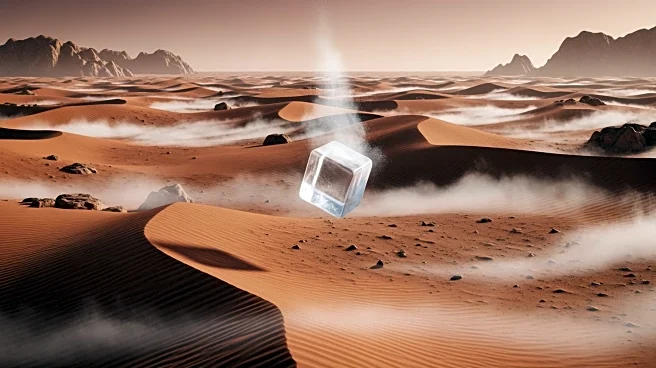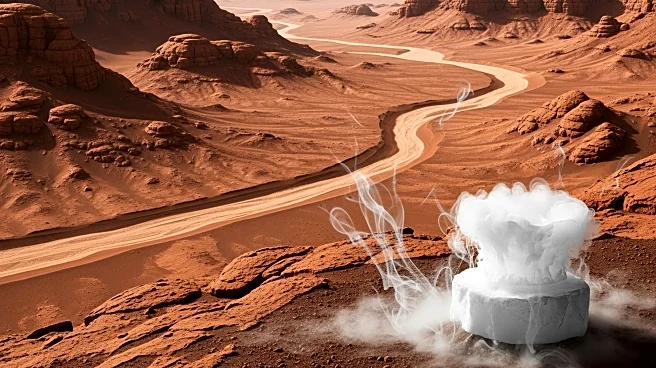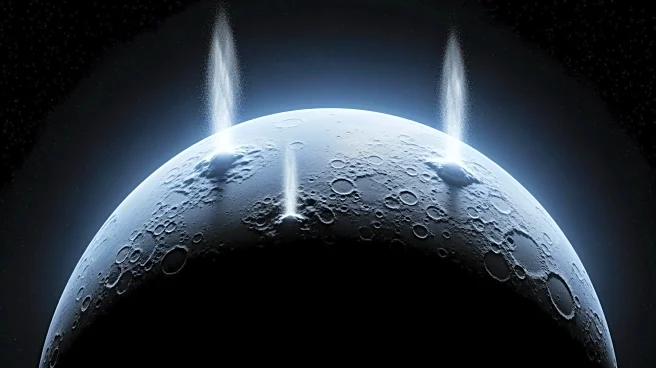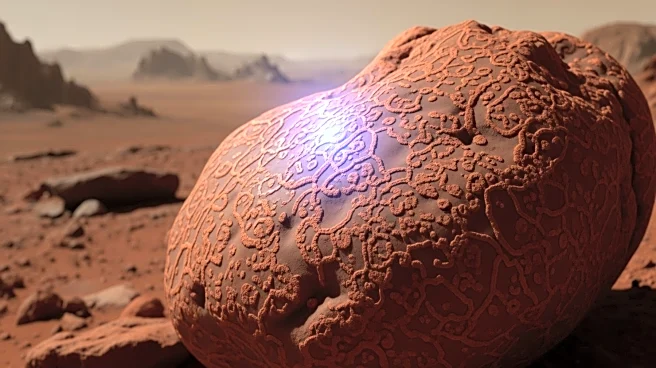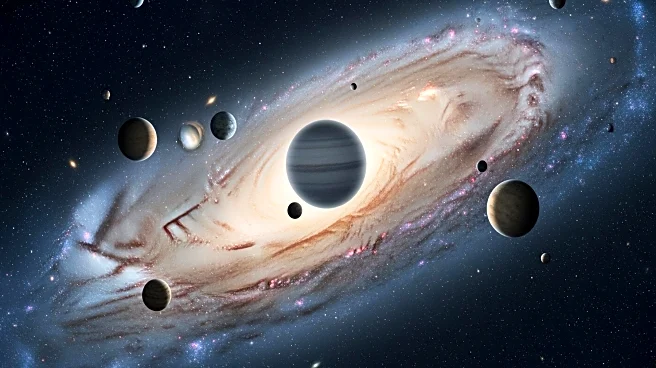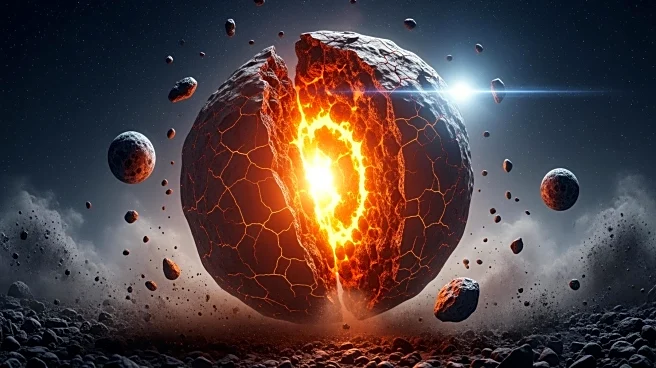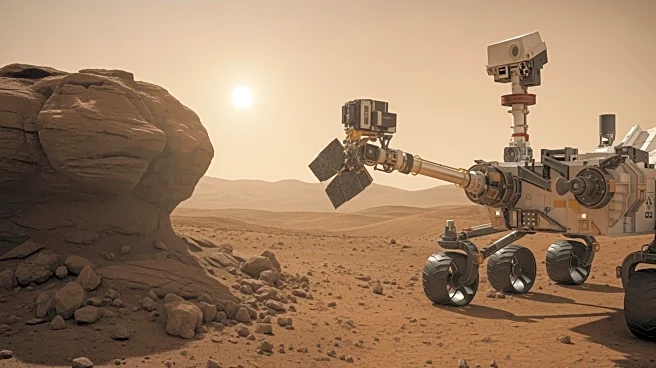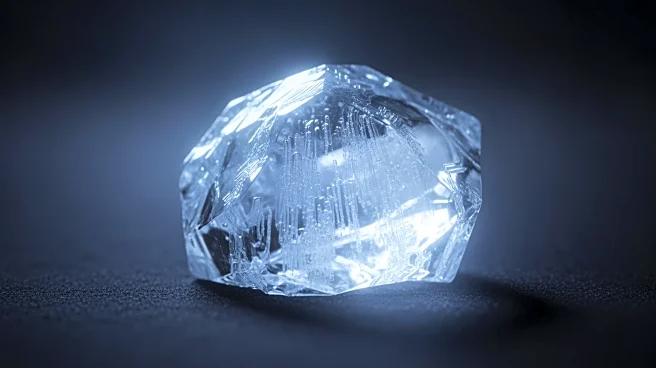What's Happening?
Recent experiments have revealed that the mysterious gullies on Mars are formed by the explosive sublimation of dry ice. These findings, led by Earth scientist Lonneke Roelofs and her team, demonstrate
that carbon dioxide ice burrows into the sand dunes, creating snake-like tracks. The research utilized a Mars chamber to simulate Martian conditions, showing that dry ice slides down slopes on a cushion of gas, leaving distinct tracks. This discovery challenges previous theories that linked the gullies to water flows, providing a new understanding of Martian landscape formation.
Why It's Important?
This breakthrough in understanding Mars' geological features has significant implications for planetary science. It offers insights into the processes shaping Mars' surface, which could inform future exploration missions. Understanding these mechanisms is crucial for interpreting Mars' climate history and assessing its potential for past life. The research also highlights the importance of simulating extraterrestrial conditions to gain insights into planetary environments, potentially aiding in the search for life beyond Earth.
What's Next?
The research team plans to conduct further experiments with larger ice blocks and different sand types to refine their understanding of the sublimation process. These studies could lead to more accurate models of Martian surface dynamics. Additionally, the findings may influence the design of future Mars missions, focusing on areas where dry ice sublimation is prevalent. This could enhance the exploration of Martian landscapes and improve the search for signs of life.
Beyond the Headlines
The study of Mars' gullies through dry ice sublimation offers a unique perspective on planetary science, encouraging researchers to think beyond Earth-centric frameworks. This approach could lead to new insights into geological processes on Earth, as well as other planets. The research underscores the interconnectedness of planetary environments and the potential for cross-disciplinary discoveries.
